Sony PVM-1910
October 2, 2024, 12:50 pm
November 27, 2024, 2:19 pm
Summary
Introduced in 1984, the PVM 1910 was sold as a hybrid broadcast and computer monitor. It has 2 composite inputs and 2 RGB inputs - a set of BNCs and the 25-pin D "computer" connector that would later be used on the PVM 2030 and 2530. Case design is similar to consumer TVs of its era.
Compared with many of Sony's professional monitors, the PVM 1910 is very low resolution. It uses a 350 TVL consumer grade Trinitron tube and, when displaying composite video, looks very similar to consumer Trinitrons from the mid to late '80s. Unlike those TVs, however, it has excellent voltage regulation and geometry controls. It can display a very clean picture with little bloom or distortion, especially when using RGB.
Literature
Notes
Other versions of this monitor were the PVM 1911 (identical to the 1910 but with a touch screen) and the PVM 2010QM; a European version that also supports PAL and SECAM.
These monitors often suffer from bad capacitors. The blue "Elna" brand capacitors are especially prone to leakage and should examined and/or replaced if possible.
The rear input panel is not secured to the case and flexes the PCB when cables are plugged in. Because of this, the solder joints for the input connectors are under significant stress and often need to be reflowed.
Gallery
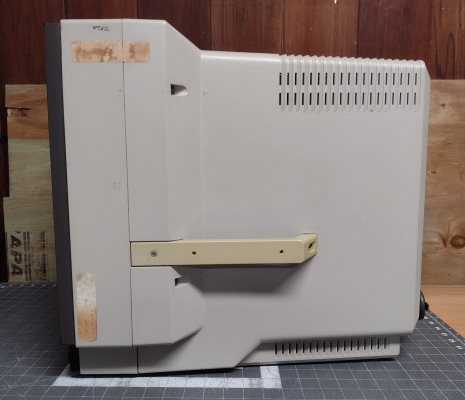
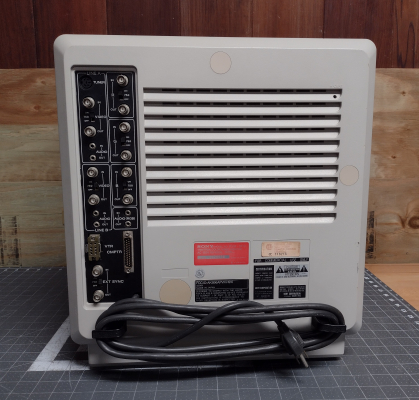
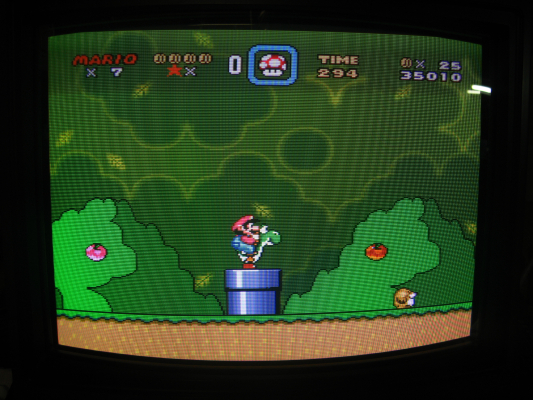
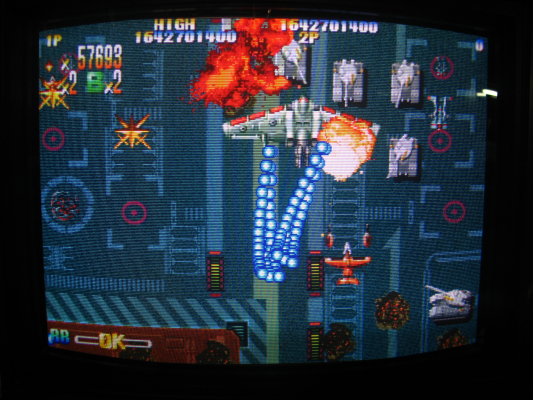

| Specifications | |
|---|---|
| Brand: | Sony |
| Manufacturer: | Sony |
| Model: | 1910 |
| Series: | PVM |
| Viewable Size: | 19" |
| Inputs: | Composite, RGB, Digital RGB, VTR |
| Sync: | CSYNC, Sync over Composite, Sync on Luma |
| Native Resolutions: | 240p, 480i |
| Linecount: | 350 TVL |
| Horizontal Scan Range: | 15 kHz |
| Formats: | NTSC |
| Aspect: | 4:3 |
| Adjustments: | Internal Potentiometers, External Potentiometers |
| Flyback: | 1-439-322-11, 1-439-322-00 |
| Tube: | Sony Trinitron , A49JHT00X |
| Deflection: | 90° |
| Mask: |
Aperture Grille

|
| Tint: | Light |
| Yoke: | 1-451-204-63, 1-451-204-61 |
| Speakers: | Mono |
| Chassis: | SCC-554A-A |
| Weight: | 64 lbs (29 kg) |
| Application: | Professional |
| Cabinet Material: | Plastic |
| Launched: | 1984 |
| MSRP: | 905 USD |
| Country of Manufacture: | Japan |
| Degaussing: | Automatic on Power-on |
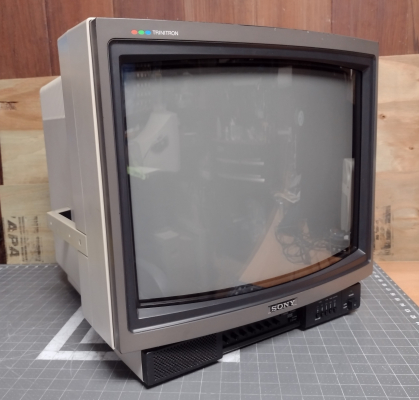
 This work is licensed under a
This work is licensed under a